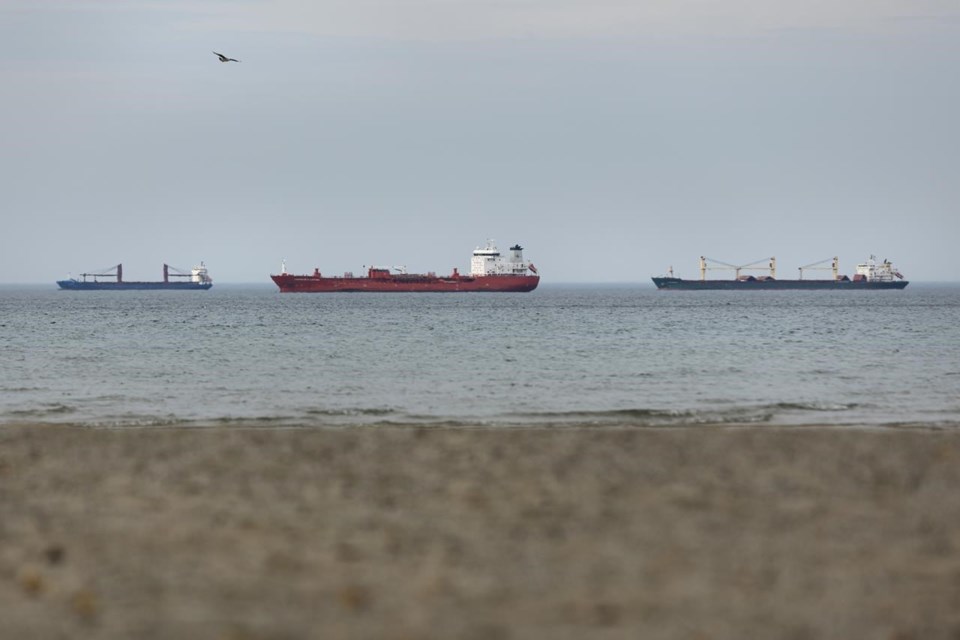TORONTO — Cargo is moving again on the St. Lawrence Seaway after management and Unifor struck a tentative deal on Sunday, but it could take most of the week to clear the backlog of ships halted during the labour stoppage — and even longer for supply chains to normalize.
The company said workers were back on the job as of 7 a.m. on Monday. The tentative agreement, which must still be ratified, ended a strike that began on Oct. 22.
The job action by 360 workers represented by Unifor brought a stop to ships though the key trade corridor.
As of Monday morning, nearly 100 ships were strewn at ports and docks across the Great Lakes and St. Lawrence River waiting to pass through the seaway, said Bruce Burrows, CEO of the Chamber of Marine Commerce.
He said it would take up to 14 hours to get the seaway up and running and around five days to clear the backlog of ships waiting to get back into the system.
"Like any major transportation interruption, it takes a bit of time for the infrastructure and so on just to turn the tap back on. It can't be done instantly," he said.
In recent days, Burrows said there had been increasing worry among shippers and producers, especially in the grain and steel sectors, who rely on the seaway to export their products.
He said the seaway has long been known for reliability and that the labour stoppage put "a major dent in that reputation."
"The phone has been ringing off the hook, let me tell you," he said. "They were all yelling and screaming and very concerned about their supplies being stuck in the chain."
Around six million tonnes of grain are exported through the St. Lawrence Seaway annually, and this time of year marks peak shipping season, said Crosby Devitt, CEO of Grain Farmers of Ontario. He said the delivery of "well over 1,000 truckloads" had to be cancelled last week due to the strike.
"We know it's had a lasting impact," said Devitt.
"It'll take a bit of time to even understand whether there's been some permanent capacity effects on our ability to move grain out before the end of the year."
Devitt said he couldn't predict how long it will take to ramp up, but hoped the lasting effects of the strike could be kept to a minimum.
"There's definitely been a cost to farmers. There has been a cost to the industry and hopefully not a lasting cost to our reputation as well," he said.
Canadian Manufacturers and Exporters president and CEO Dennis Darby estimated the strike cost companies at least $35 million per day collectively.
He said that figure would gradually decline as the system returns to normal, which could take weeks. Darby said lessons learned from the B.C. ports strike earlier this year suggest that for every day lost during a work stoppage, it takes three to five days for supply lines to normalize.
The St. Lawrence Seaway strike "had a pretty broad-reaching impact," said Darby, noting that "anything that you can think of that's big and has to move in bulk" was affected.
"In most cases for the kind of goods that travel by sea, there aren't many alternatives. People were staring down a lot of production being cut," he said.
"Now it will take days and weeks for things to unblock … It's still better than the alternative, which is the longer it persisted, the worse it would be. And of course, we were all coming up against the freeze season."
The premiers of Ontario and Quebec had called on Ottawa to intervene if federally mediated talks failed to bring about a quick end to the walkout.
Details of the settlement were not immediately available, but the union had been fighting for higher wages to keep up with the rising cost of living.
—With files from Christopher Reynolds in Montreal
This report by The Canadian Press was first published Oct. 30, 2023.
Sammy Hudes, The Canadian Press



